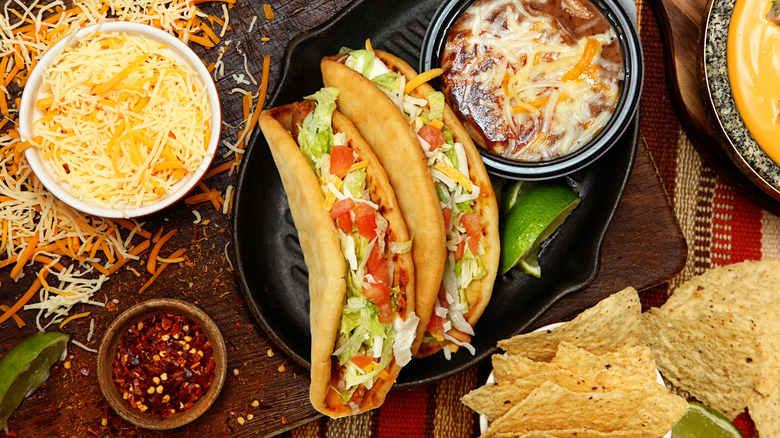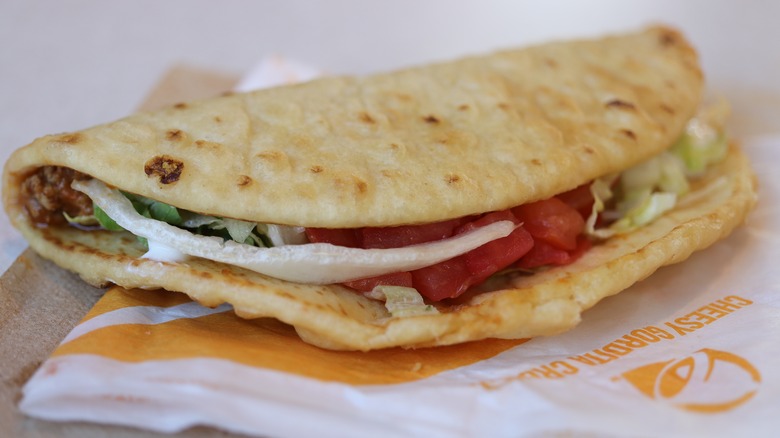What Are Chalupas And How Are They Different In The US Vs. Mexico?
In the diverse tapestry of Mexican cuisine, the chalupa stands as a delectable testament to centuries of culinary innovation. Rooted in the heart of Mexico's culinary heritage, the chalupa is more than just a dish; it's a harmonious blend of flavors, textures, and history.
The chalupa's origins trace back to the ancient civilizations that flourished across the region now known as Mexico. The word "chalupa" is of uncertain origin; it may be derived from an Aztec word for a type of boat, or possibly from a Spanish derivation of the Dutch "sloep" referring specifically to a sloop. Regardless, the nautical influence is symbolic of the chalupa's structure — a boat-like fried or baked masa dough base that cradles an array of savory toppings.
The masa dough, made from ground nixtamalized corn, is a cornerstone of Mexican cuisine, cherished for its versatility and centrality to countless dishes. The shell is crisp and golden when fried, providing a slight crunch that contrasts beautifully with the toppings it carries. These toppings are a playground for flavors. Traditional chalupas often feature shredded meats, beans, salsa, crema, cheese, and various herbs and vegetables. The melding of these components creates a symphony of tastes — the earthiness of beans, the zestiness of salsa, the richness of crema, and the robustness of meats.
Mexican chalupas vs. US chalupas
While the chalupa may have originated in Mexico, its journey to international recognition has led to variations, particularly in the United States. There are many similarities between the two varieties of chalupa, yet what sets them apart speaks to the differences in each nation's culinary customs and relationship with food.
The traditional Mexican chalupa is a reflection of the country's agricultural abundance and vibrant food culture. The masa shell, carefully crafted, embodies the artistry that Mexican cooks have refined over generations. What's inside varies across regions and seasons, highlighting the use of locally sourced ingredients. From the coastal regions with their seafood-infused versions to the heartland's meat-centric chorizo and stewed pork renditions, the original Mexican chalupa showcases culinary diversity. Toppings tend to stay simple with salsas and lettuce.
In the United States, the chalupa underwent an intriguing transformation as it was adapted to American tastes. Here, the chalupa was quickly embraced by fast food chains — most notably Taco Bell — and became a recognizable item on menus. Instead of a masa shell, it often features a thick, fried, wheat flour tortilla, more akin to fried dough. The toppings, while inspired by Mexican flavors, lean towards a fusion of Tex-Mex ingredients like cheddar jack cheese, sour cream, hot sauce, and chili powder instead of fresh chiles.

